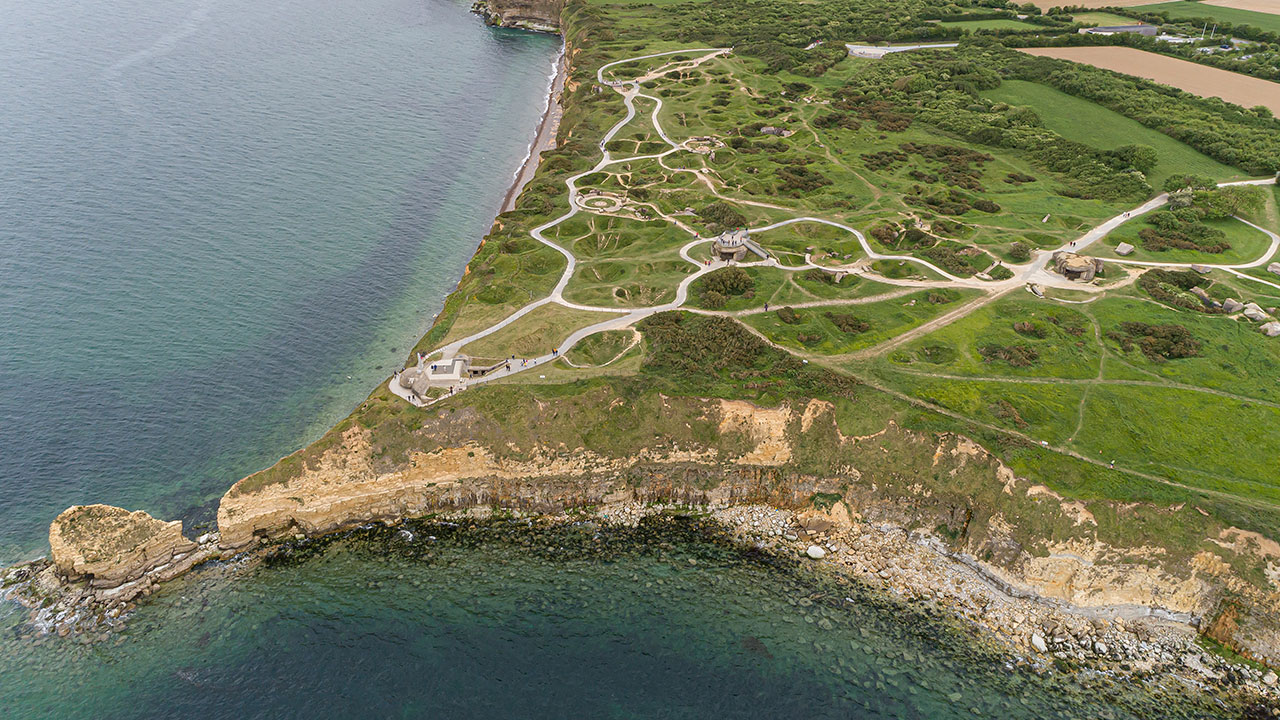D-Day anniversary: Rare color footage brings World War II to life 75 years later

WASHINGTON -- Seventy-five years ago, Hollywood director George Stevens stood on the deck of the HMS Belfast to film the start of the D-Day invasion.
The resulting black-and-white films - following Allied troops through Normandy, the liberation of Paris, Battle of the Bulge, the horror of the Dachau concentration camp - form the basis of Americans' historical memory of World War II, and were even used as evidence in Nazi war crimes trials.
But the director was also shooting 16-millimeter color film for himself of the same events, creating a kind of personal video journal of his experiences.
As veterans and world leaders prepare to mark the 75th anniversary of D-Day next week, Stevens' surprising color images bring an immediacy to wartime memories, a powerful reminder of the war's impact and its heroes as those who witnessed the war are dying out.
"You've seen it in black and white. And when you see it in color, all of a sudden it feels like today," his son George Stevens Jr. said in an interview. "It doesn't seem like yesterday. And it has a much more modern and authentic feeling to it."
Next week's D-Day commemorations are about honoring the thousands killed and wounded on June 6, 1944 - and people like Stevens Jr.'s father.
Then 37, Stevens was already a famous American director who had made Hollywood classics like "Gunga Din" and "Swing Time."

"My father was beyond draft age. And he had a dependent child. So there was no chance of him being called up," Stevens Jr., a filmmaker in his own right, told The Associated Press. But his father felt compelled to enlist in the U.S. military after seeing the power of Nazi propaganda films including Leni Riefenstahl's "Triumph of the Will."
"The next day he started calling up to find out how he could get into the service. He couldn't sit on the sidelines in Hollywood, and wanted to make his contribution," his son said.
General Dwight Eisenhower assigned Stevens to head up the combat motion-picture coverage. From D-Day on, Stevens and his team stormed through France and across Europe following U.S. forces.
George Stevens Jr., now 87, was a child when his dad left to cover the war. Only after his father's death, decades later, did he discover reels of the color film in storage.
They could have been anything - his father used the same camera during the war that he had used to film his son's birthday parties.
But what his son found that day in 1980 was no normal home video.
"I was sitting alone, and on the screen came images of a gray day and rough seas and a large ship and barrage balloons up in the sky. And I realized it was D-Day.
"And I realized that my eyes were probably the first other than those who were there to see this in color," he recalled. "I'm watching this footage and seeing the men on the ship ... and around the corner walks into the frame a man with a helmet and a flak jacket. It's my 37-year-old father on the morning of D-Day."
Stevens Jr., a writer, director and founder of the American Film Institute, later made a documentary with the footage, "George Stevens: D-Day to Berlin."
"My father referred to his experience in World War II as having a seat on the 50-yard line. And seeing men at their best and at their worst," his son said.
Long before social networks and smartphones, the outside world had little visual evidence of the Nazis' attempted genocide of the Jews.
His father's unit "went into Dachau, the concentration camp, and nobody had anticipated what they were going to find there," Stevens Jr. said. "It was this harrowing sight of these emaciated prisoners and typhus and disease and dead bodies stacked like cordwood. ... Rather than just being a recorder of events, he became a gatherer of evidence, and he himself took a camera and went into these boxcars, with snow on the ground, with frozen bodies."
Stevens documented the scenes both in black and white and in color, and images he shot at Dachau were among those shown at the Nuremberg war crimes trials, according to his son.
He also filmed Allied war generals working together during the war to defeat fascism. Now, 75 years on, the trans-Atlantic alliance is fraying and Europe's extreme right is resurging, making remembrance of the war especially important.
"I think that common interests and purpose will keep us together," Stevens Jr. said. He praised the U.S.-led postwar effort "to embrace the defeated and help them, help Germany become a great nation," calling it a "very American idea ... that will serve us far into the future."










